The Relentless March of AI: A Glimpse into the Latest and Upcoming Projects
.png)
The landscape of Artificial Intelligence is evolving at an unprecedented pace, with new breakthroughs, models, and applications emerging almost daily. From more intuitive conversational agents to robots capable of complex physical tasks, AI is rapidly reshaping our world. Here's a look at some of the most significant and anticipated AI projects and trends currently defining the cutting edge.
1. The Era of Multimodal Large Language Models (LLMs)
OpenAI's GPT-4o: Announced in May 2024, GPT-4o ("omni") represents a significant leap towards more natural human-computer interaction. It processes and generates text, audio, and image inputs and outputs with impressive speed and coherence. This model is poised to make AI assistants feel far more intuitive and responsive.Official Link: Introducing GPT-4o
Google Gemini Family (1.5 Pro, Flash) & Project Astra: Google continues to push its Gemini models, focusing on massive context windows, faster inference, and robust multimodal capabilities. Their "Project Astra" demo showcased an experimental AI agent capable of real-time reasoning and interaction with the physical world, hinting at future capabilities for Gemini.Official Link (Gemini): Google Gemini Official Link (Project Astra Demo): Project Astra: Our vision for the future of AI assistants
Anthropic's Claude 3 (Opus, Sonnet, Haiku): Launched in early 2024, the Claude 3 family, particularly the flagship Opus model, offers highly competitive performance across various benchmarks, often matching or exceeding rivals in complex reasoning. Anthropic maintains a strong focus on AI safety and responsible development.Official Link: Introducing Claude 3
Meta Llama 3: Meta's commitment to open-source AI is exemplified by Llama 3, the latest iteration of its powerful language model. Making such advanced models freely available to developers accelerates innovation and broadens accessibility. Future versions are expected to be even more formidable.Official Link: Llama 3
2. Generative AI for Visual Media: Video and 3D
OpenAI's Sora: Although not yet publicly available, Sora's text-to-video capabilities have stunned the AI community. It generates incredibly realistic and consistent video clips from textual descriptions, promising to revolutionize content creation for film, advertising, and more. Its wider release is eagerly awaited.Official Link: Sora: Creating video from text
Google Veo & Imagen 3: Google's advancements in generative video (Veo) and image (Imagen 3) demonstrate parallel progress in creating compelling visual content from text.Official Link (Veo Announcement): Introducing Veo Official Link (Imagen 3 Announcement): Introducing Imagen 3
Emerging 3D Generation: Numerous startups and research initiatives are pushing the boundaries of generating 3D assets and environments directly from text or 2D images, with massive implications for gaming, virtual reality, and industrial design. Keep an eye on announcements from companies like Luma AI (with "Genie") and academic research papers.
3. Embodied AI and Robotics: Bringing AI to the Physical World
Figure AI & OpenAI Partnership: Figure is at the forefront of developing general-purpose humanoid robots. Their recent collaboration with OpenAI aims to integrate OpenAI's state-of-the-art AI models directly into these robots, enabling them to understand and perform complex tasks in the real world through natural language.Official Link (Figure AI): Figure AI Official Link (OpenAI Partnership Announcement): OpenAI, Figure team up to develop AI models for humanoid robots
Tesla Bot (Optimus): Tesla continues to refine its humanoid robot, Optimus, showcasing progress in dexterity, balance, and autonomous task execution, with the long-term goal of performing dull, repetitive, or dangerous tasks.Official Link (Tesla AI Day/Robotics updates often come via their main site/presentations): Tesla AI
4. Specialized AI Agents and Personalization
Autonomous Agents: Projects focused on developing AI agents that can break down complex goals, use various tools (web browsers, APIs), and interact with digital services to accomplish multi-step tasks are gaining traction. Companies like Adept are actively working in this space.General Concept (Adept, example of an agent company): Adept AI
On-Device AI Integration (e.g., Apple): Expect major announcements from tech giants, particularly Apple, regarding how AI will be deeply integrated into their operating systems and hardware. The focus is often on privacy-preserving, on-device AI capabilities for personal assistants and core applications, reducing reliance on cloud processing for common tasks.Official announcements typically come at major events like WWDC. For now, this is a highly anticipated area of development.
5. AI Hardware and Infrastructure
New AI Chips (Nvidia Blackwell, AMD Instinct, Intel Gaudi): Companies are in an arms race to develop more powerful and energy-efficient AI accelerators. Nvidia's Blackwell architecture, AMD's Instinct series, and Intel's Gaudi chips are examples of cutting-edge hardware designed to power the next generation of AI.Official Link (Nvidia Blackwell): NVIDIA Blackwell Platform Official Link (AMD Instinct): AMD Instinct Accelerators Official Link (Intel Gaudi): Intel Gaudi AI Processors
6. AI Safety, Ethics, and Governance
Regulatory Frameworks (e.g., EU AI Act): Governments worldwide are working to establish legal and ethical guidelines for AI. The EU AI Act is a pioneering example, aiming to regulate AI based on its potential risk level.Official Link (European Parliament): Artificial intelligence: MEPs adopt pioneering law
AI Safety Research: Major AI labs, academic institutions, and dedicated organizations (like the Center for AI Safety) are conducting crucial research into mitigating potential risks associated with advanced AI, including issues like misalignment, bias, and misuse.Official Link (Center for AI Safety): Center for AI Safety







